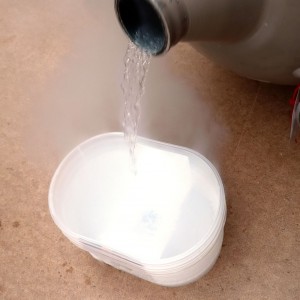Cryogenics is the science that deals with the study of very low temperatures. This is not to be confused with cryonics, or the preservation of humans by freezing them.
Need your brake rotor to last 3 times as long? Perhaps you’re a machinist and you’d like to get several hundred more holes out of your drill-bit before it needs to be sharpened? This is completely possible through cryogenic treatment, also known as cryogenic processing.
How does it work? By exposing certain materials, such as steel, to cryogenic temperatures (can be as low as -197C or -321F) using liquid nitrogen, the material goes through a transformation that changes the retained austenite to martensite. This essentially increases the overall strength of the material along with better wear resistance so parts can last longer, improved electrical conductivity and other beneficial properties are achieved.
Liquid nitrogen (LN2) is the cryogen of choice for such treatments. It boils at a temperature of -321F (-197C, 77K). This means that -321F is the coldest a material could be treated with LN2. Or is it?
My thoughts were that if a treatment was done within a vacuum, the temperature of LN2 could be dropped below it’s boiling point, down to just about it’s freezing point at -346F (-210C, 63K). Could this improve the cryogenic treating process? Perhaps it could speed it up? Those are questions which I propose and would like to seek out the answers.

